8 themed video game levels that wont go away
Level one

Remember the days of themed worlds in action-adventure games? Like the ice world, the forest area, the frustrating and inexplicably survivable lava realm? These levels popped up so frequently that they became a staple of the genre, and we all became experts at ice walking, avoiding swamp piranhas, and fire dodging by necessity. Things have changed as the genres grown and started going through its broody teenage years, but old habits die hard.
Instead of abandoning the themed level design, action-adventure games just came up with new ubiquitous stages--darker, grittier, and more mature ones, of course. Here are eight seemingly mandatory levels in every adventure game for your reading pleasure. Might as well get used to them--they dont look like theyre going anywhere anytime soon.
The factory level
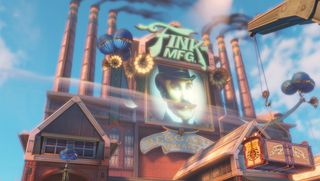
Lets start with one of the golden children of required stages: the factory level. While it comes in several different forms, from assembly-line to dingy processing plant to secret alien conversion facility, the place always has a soulless industrial feel to it. Its a favorite of dystopian adventure games for this reason, and its often used to show the oppression experienced by the folks who work there. Even in games that dont go for the crushed-in-the-cogs angle, the factory tends to be unpleasant and grungy, and its not a place where you want to spend much time.
Thats unfortunate, as the factory is also one of the genres favorite playgrounds. With plenty of wicked machinery to avoid and industrial-sized environments to explore, players will often find themselves wandering the factory for extended periods of time, sometimes through multiple levels. Thankfully the place is usually packed with goodies and a little universe lore (what, you thought they were making something normal in there?), so you can enjoy that while you avoid the crushing machine.
The slum level
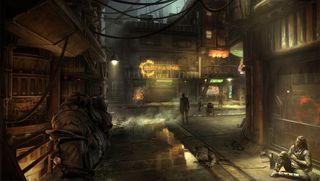
The people that work in the factory have to live somewhere--if they have the privilege, that is. The slum level is a favorite starting place for many action-adventure games, as it helps establish the hero/ines rough, tough origins and resulting badassery. Alternatively, the slum level can serve as a wake-up call to a character who unwittingly tumbles into it, particularly if they thought their city/borough/fantasy kingdom was pretty okay up until then.
In any case, the slum is full of a games biggest low-lifes, and theyre often the most interesting people you meet. Your Atlases come from here, and your Dauds, and your Garrus Vakarianes circa ME2. Whether theyve crawled their way from the heap or are the product of a semi-functional lawless society depends on the games desired tone. Is the slum a down and dirty haven hidden from the eyes of the law, or a disease-ridden hellhole? (And could you really tell the difference?)
The prison level
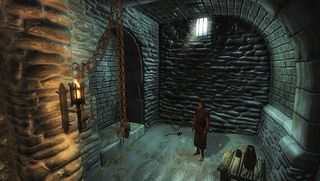
Move over, Bethesda: the rest of the genre's caught wind of the prison level and how useful it can be as a game-changer, so you may not be its foremost authority for long. (I'm not fooling anyone, but still.)
Sign up to the 12DOVE Newsletter
Weekly digests, tales from the communities you love, and more
The prison level, which sees the protagonist having to discretely navigate close quarters full of heavily-armed enemies, is a way many adventure games choose to shuffle the metaphorical deck. If it's the first stage of the game (see every Elder Scrolls ever), the prison level can show that the protagonist is starting from nothing--sort of like a clean slate, but with jail. However, it also serves as an interesting trial when used later on. For instance, in games where hack-and-slash tactics are typical, it can challenge players to strategize more effectively, and think about how to make it through while drawing the least amount of attention. Some players may object to the forced stealth, but hey, they're welcome to charge into a high-security prison full of guards armed to the teeth. I'll wait outside.
The brothel level

The brothel / strip club level is one of the most commonplace in modern games. Want some instant controversy, or just a little titillation for your (probably under-age) teenage players? Just bring together a few semi-naked ladies, some grimy gangster types, and a few suggestive moaning noises. Voila! Instant appeal / outrage!'
However, once you get past the sophomoric chuckling, the brothel level serves as a useful source of information. These ladies of the night trade in secrets, so it's believable that the protagonist would be able to get critical answers here they wouldnt get anywhere else. Getting in nice with the prostitutes often leads to them giving you useful tips, and in a few games they will even assist the protagonist outside their bordello. On top of that, the brothel also serves as a hiding place for mission-critical objects and people, because where better to keep a secret than a whorehouse? So don't be surprised if incriminating evidence is shoved in a mattress or you find that missing royal in the closet.
The dream level

Say you're playing a typical action-adventure game, journeying and pillaging and taking down bad guys. Then something disastrous happens and things get.... weird. Like, melting-clocks weird. Congratulations, you're in the dream level.
A more recent addition to the adventure game playbook, the dream level has become a pivotal way for games to advance their plots in bizarre, but concise fashion. A surreal environment where the laws of physics go out the window, its effectively the opposite of the factory: there's very little extra stuff to do, because the purpose of the level is for the main character to achieve a set goal and bolster their own development. Death of a loved one leaves your protagonist directionless? Deal with that in the dream level. Need some magic powers to beat their enemies? The dream level has something for that. The true enemy is within their subconscious and they have to dig deep to destroy it? Three guesses where that big fight's gonna happen.
The temple/church level

Want to make a character intimidating? Make them crazy. Want to make a character terrifying? Make them a crazy priest. Action-adventure games have latched onto the temple/church level in recent years, often to establish how backward the world is when everything is run by crazy cults. However, that doesn't necessarily apply to all adventure games, and the temple has a surprising amount of versatility.
Of course one of the genre's favorite ways to use the temple is as a house of the not-so-holy, combining the stealth of the prison level with a helping of creepy. However, the temple's use varies widely after that, and it can serve as anything from an actual place of sanctuary (did someone say save point?) to a cache of priceless artifacts (I'm looking at you, Assassin's Creed). The purpose of the church level can also shift with relative ease, so you have to watch your back here--it may look like a peaceful sanctum or treasure trove now, but something may be rotten in the state of Draenor.
The secret base level
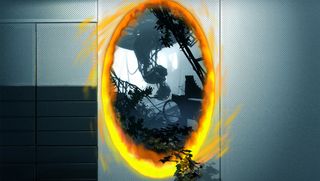
Through an incredible show of will, stabbing people and resetting saves, you've finally managed to infiltrate an enemy's secret base--and you best keep trucking, because it's not gonna get any easier.
They can be giant multi-floor complexes buried underground, hidden bunkers, space stations or collapsing buildings, and the only limit is the developers imaginations. What makes the secret base level stand out is that the enemy is there, searching you out, and it's going to take all your wits and skills to get to them first. Generally the secret base serves as a late-stage test of the protagonist's skills, utilizing everything they've learned to navigate tough puzzles, beat some of the baddest mooks the game has to offer, or both. While the secret base isn't always the location of the final battle, a major conflict usually comes to a head here, with the protagonist resolving a major side plot or defeating a false antagonist. Just hope that when its time to book it out of there, the self-destruct counter doesnt start too low.
The fortress level

Subtlety isn't the name of the adventure game; if you don't believe me, look at the fortress level. Usually a final stage, the fortress is big, imposing, and seemingly impenetrable. With perimeter walls, overpowered sentries, locked doors and traps at every corner, the fortress is designed to make you pay for wanting to succeed. You will almost certainly be ambushed by enemies who would have one-shotted you on level 1, and its multiple areas all packed together means tiers upon tiers of punishment.
You have to want it to get past the fortress, and of course, that's the point. It wouldn't be much of an adventure if there wasn't a climactic struggle at the end of the journey, so this is where the game plays hard ball. Your characters not going to scale that steadily collapsing wall or put a knife in a behemoth's back without you, and the overwhelming nature of the fortress inspires the drive to make that happen. Storm the castle turrets, the game is saying--go forth and claim your victory!
The last level

And if you're looking for more, check out 7 minibosses who were better than the final boss and why Bowser always fails.
Former Associate Editor at GamesRadar, Ashley is now Lead Writer at Respawn working on Apex Legends. She's a lover of FPS titles, horror games, and stealth games. If you can see her, you're already dead.

A week after suffering webcam tragedy, blindfolded Super Mario 64 speedrunner casually breaks 3 world records in 4 days: "Another day in the office, another world record"
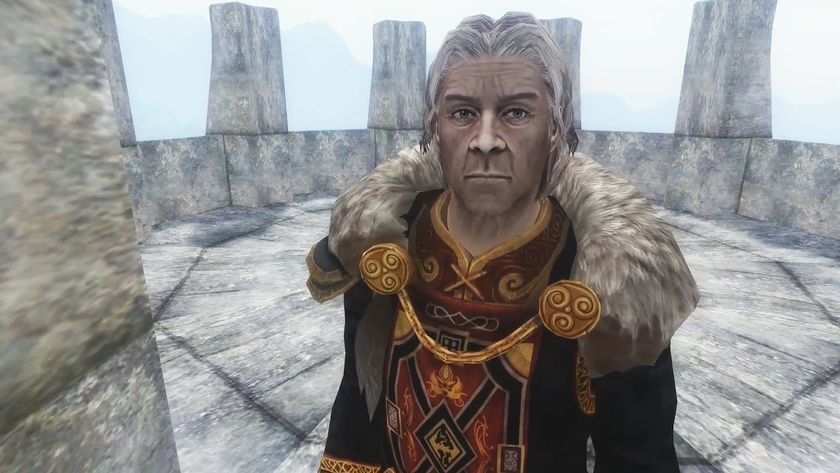
Modder leading 13-year effort to remake Oblivion in Skyrim isn't worried about an official remake: "The fact Skyblivion is nearly in a releasable state is a miracle"
Most Popular





